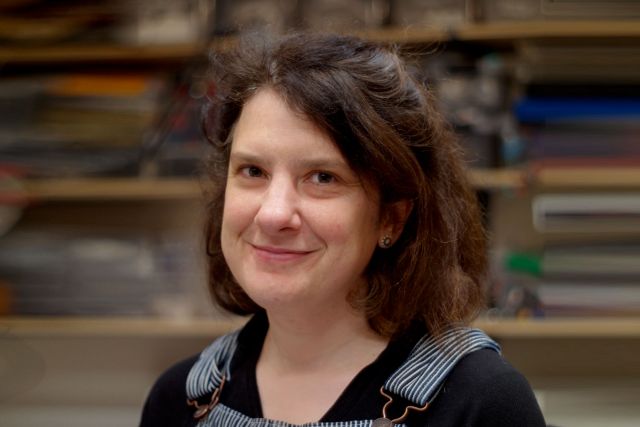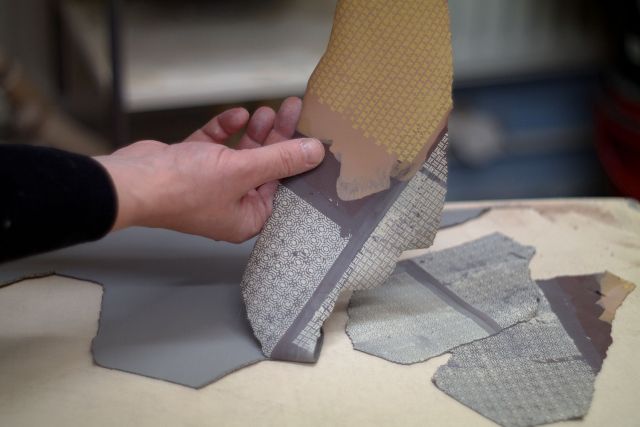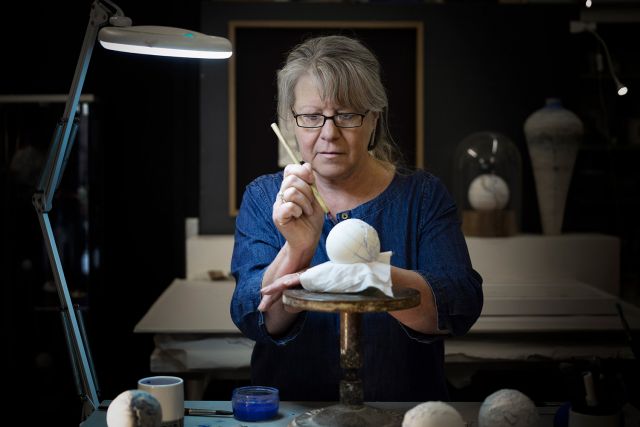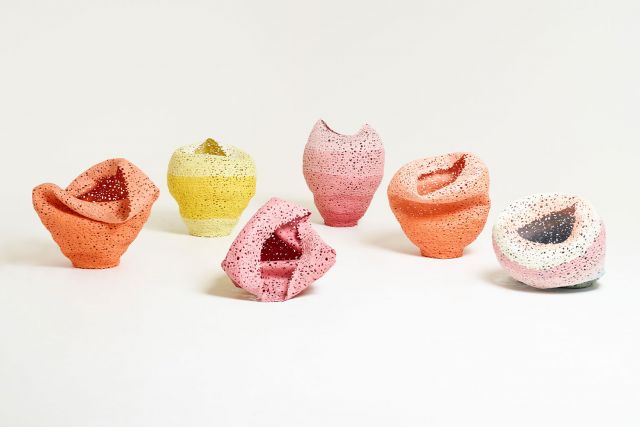The surface pattern of this ceramic sheep, resembling shorn fleece, is made up of more than 10,000 cut and collaged pieces of finely printed paper porcelain. The configuration of the pattern was inspired by the repeated incised designs of ancient Egyptian bas-relief stone carvings.
Height 70 cm
Depth 70
Width 36 cm
 Workshop 5.jpg.jpeg)
 Making 11.jpg.jpeg)

 Making 14.jpg.jpeg)
 Materials 6.jpg.jpeg)
Susan O'Byrne
- Ceramicist
- Glasgow, United Kingdom
- Master Artisan
- Recommended by Crafts Council UK
By appointment only
+44 7752104623
Animal magic
- • Susan first studied tapestry before switching to ceramics
- • She has developed surface patterns to reference needlepoint
- • She experiments with laser-cut stencils to create lace-like patterns
Animals are key to Susan O’Byrne’s work, vehicles with which to distil, reflect and embody aspects of humanity. In her autobiographical work Five Sisters and a Family Tree, for example, she used five roe deer to represent the sisters. “Animals have populated myths, children’s stories and cultural traditions throughout history. They occupy an extraordinary role within our imagination,” she says. Susan discovered ceramics as a student at Edinburgh College of Art. “It offered a very defined set of parameters but provided an infinite potential of practical skills to be mastered.” Always experimental and curious, her work continues to evolve. Current research includes the addition of pre-fired, coloured and milled porcelain.
Read the full interviewWorks
Photo: © Taili Wu

Photo: © All rights reserved
This piece is one of a series of animals inspired by medieval bestiaries. The patterns are printed as sheets of paper porcelain before being cut and collaged on the surface and make reference to those found in encaustic tiles of the Middle Ages.
Height 90 cm
Depth 32
Width 25 cm

Photo: © All rights reserved
This piece is one of a series of animals inspired by medieval bestiaries. The patterns are printed as sheets of paper porcelain before being cut and collaged on the surface and make reference to those found in encaustic tiles of the Middle Ages.
Height 90 cm
Depth 90
Width 36 cm

Photo: © Ian Marshall
This ceramic antelope head is one of 50 animal portraits that make up Susan’s “Family Tree” installation. The collection depicts her late German family members as an array of exotic animals (her mother’s side of the family migrated from Germany to Ireland). Gerde Wilde is portrayed as a dwarf antelope or dik-dik. The patterns on the surface of the sculpture were inspired by historic needlepoint samplers.
Height 15 cm
Depth 11
Width 10 cm

Photo: © All rights reserved
Part of a series of African birds created by Susan in porcelain, this trio is decorated with an intricate patchwork design, resembling broken pieces of coloured patterned tiles. Susan specialises in the making of narrative animal forms which she uses as a vehicle for the expression of human emotions.
Height 13 cm
Depth 11
Width 6 cm














